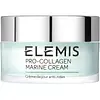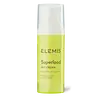What's inside
What's inside
 Key Ingredients
Key Ingredients

 Benefits
Benefits

 Concerns
Concerns

 Ingredients Side-by-side
Ingredients Side-by-side

Water
Skin ConditioningGlycerin
HumectantCaprylic/Capric Triglyceride
MaskingGlyceryl Stearate Se
EmulsifyingIsononyl Isononanoate
EmollientDicaprylyl Carbonate
EmollientDimethicone
EmollientTriticum Vulgare Germ Oil
EmollientButyrospermum Parkii Butter
Skin ConditioningChlorella Vulgaris Extract
Skin ConditioningPadina Pavonica Thallus Extract
Skin ConditioningDaucus Carota Sativa Root Extract
Skin ConditioningPorphyridium Cruentum Extract
Skin ConditioningAcacia Decurrens Flower Extract
MaskingRosa Centifolia Flower Extract
AstringentGinkgo Biloba Leaf Extract
Skin ConditioningTocopherol
AntioxidantPhenoxyethanol
PreservativePolyacrylate-13
Stearic Acid
CleansingTocopheryl Acetate
AntioxidantCoco-Caprylate/Caprate
EmollientCetyl Alcohol
EmollientXanthan Gum
EmulsifyingGlyceryl Polyacrylate
Polyisobutene
Parfum
MaskingCitric Acid
BufferingChlorphenesin
AntimicrobialGlyceryl Acrylate/Acrylic Acid Copolymer
HumectantSodium Dehydroacetate
PreservativeDisodium EDTA
Polysorbate 20
EmulsifyingSorbitan Isostearate
EmulsifyingHydroxyisohexyl 3-Cyclohexene Carboxaldehyde
MaskingButylphenyl Methylpropional
PerfumingLinalool
PerfumingCitronellol
PerfumingPotassium Sorbate
PreservativeSodium Benzoate
MaskingCitrus Limon Peel Oil
MaskingCuminum Cyminum Seed Oil
MaskingCedrus Atlantica Bark Oil
MaskingLimonene
PerfumingWater, Glycerin, Caprylic/Capric Triglyceride, Glyceryl Stearate Se, Isononyl Isononanoate, Dicaprylyl Carbonate, Dimethicone, Triticum Vulgare Germ Oil, Butyrospermum Parkii Butter, Chlorella Vulgaris Extract, Padina Pavonica Thallus Extract, Daucus Carota Sativa Root Extract, Porphyridium Cruentum Extract, Acacia Decurrens Flower Extract, Rosa Centifolia Flower Extract, Ginkgo Biloba Leaf Extract, Tocopherol, Phenoxyethanol, Polyacrylate-13, Stearic Acid, Tocopheryl Acetate, Coco-Caprylate/Caprate, Cetyl Alcohol, Xanthan Gum, Glyceryl Polyacrylate, Polyisobutene, Parfum, Citric Acid, Chlorphenesin, Glyceryl Acrylate/Acrylic Acid Copolymer, Sodium Dehydroacetate, Disodium EDTA, Polysorbate 20, Sorbitan Isostearate, Hydroxyisohexyl 3-Cyclohexene Carboxaldehyde, Butylphenyl Methylpropional, Linalool, Citronellol, Potassium Sorbate, Sodium Benzoate, Citrus Limon Peel Oil, Cuminum Cyminum Seed Oil, Cedrus Atlantica Bark Oil, Limonene
Water
Skin ConditioningDicaprylyl Carbonate
EmollientGlycerin
HumectantC12-16 Alcohols
EmollientPentaerythrityl Distearate
EmulsifyingIsononyl Isononanoate
EmollientAlpha-Glucan Oligosaccharide
CleansingCucumis Sativus Oil
EmollientCitrus Nobilis Fruit Extract
MaskingRaphanus Sativus Seed Extract
Skin ConditioningSalvia Hispanica Seed Oil
MoisturisingPhenoxyethanol
PreservativePropanediol
SolventPalmitic Acid
EmollientHydrogenated Lecithin
EmulsifyingSodium Polyacrylate
AbsorbentSodium Stearoyl Glutamate
CleansingChlorphenesin
AntimicrobialXanthan Gum
EmulsifyingLycium Chinense Stem Extract
Skin ConditioningTocopherol
AntioxidantBrassica Oleracea Italica Seed Oil
EmollientLactobionic Acid
BufferingParfum
MaskingPanthenol
Skin ConditioningSodium Dehydroacetate
PreservativeLimonene
PerfumingCitrus Aurantium Dulcis Peel Oil
MaskingCamellia Sinensis Leaf Powder
ExfoliatingAmyris Balsamifera Bark Oil
MaskingCymbopogon Martini Oil
Masking1,2-Hexanediol
Skin ConditioningGeraniol
PerfumingLinalool
PerfumingRosmarinus Officinalis Leaf Oil
MaskingDaucus Carota Sativa Seed Oil
EmollientPolyglyceryl-3 Diisostearate
EmulsifyingLactobacillus
Skin ConditioningZingiber Officinale Root Extract
MaskingCaramel
Cosmetic Colorant3-O-Ethyl Ascorbic Acid
Skin ConditioningLecithin
EmollientHelianthus Annuus Seed Oil
EmollientPotassium Sorbate
PreservativeSodium Benzoate
MaskingAscorbic Acid
AntioxidantBenzyl Alcohol
PerfumingMaltodextrin
AbsorbentLonicera Caprifolium Flower Extract
PerfumingLonicera Japonica Flower Extract
Skin ConditioningRosmarinus Officinalis Leaf Extract
AntimicrobialChlorophyllin-Copper Complex
AntioxidantBenzoic Acid
MaskingDehydroacetic Acid
PreservativeWater, Dicaprylyl Carbonate, Glycerin, C12-16 Alcohols, Pentaerythrityl Distearate, Isononyl Isononanoate, Alpha-Glucan Oligosaccharide, Cucumis Sativus Oil, Citrus Nobilis Fruit Extract, Raphanus Sativus Seed Extract, Salvia Hispanica Seed Oil, Phenoxyethanol, Propanediol, Palmitic Acid, Hydrogenated Lecithin, Sodium Polyacrylate, Sodium Stearoyl Glutamate, Chlorphenesin, Xanthan Gum, Lycium Chinense Stem Extract, Tocopherol, Brassica Oleracea Italica Seed Oil, Lactobionic Acid, Parfum, Panthenol, Sodium Dehydroacetate, Limonene, Citrus Aurantium Dulcis Peel Oil, Camellia Sinensis Leaf Powder, Amyris Balsamifera Bark Oil, Cymbopogon Martini Oil, 1,2-Hexanediol, Geraniol, Linalool, Rosmarinus Officinalis Leaf Oil, Daucus Carota Sativa Seed Oil, Polyglyceryl-3 Diisostearate, Lactobacillus, Zingiber Officinale Root Extract, Caramel, 3-O-Ethyl Ascorbic Acid, Lecithin, Helianthus Annuus Seed Oil, Potassium Sorbate, Sodium Benzoate, Ascorbic Acid, Benzyl Alcohol, Maltodextrin, Lonicera Caprifolium Flower Extract, Lonicera Japonica Flower Extract, Rosmarinus Officinalis Leaf Extract, Chlorophyllin-Copper Complex, Benzoic Acid, Dehydroacetic Acid
 Reviews
Reviews

Ingredients Explained
These ingredients are found in both products.
Ingredients higher up in an ingredient list are typically present in a larger amount.
Chlorphenesin is a synthetic preservative. It helps protect a product against bacteria in order to extend shelf life. In most cases, Chlorphenesin is paired with other preservatives such as phenoxyethanol and caprylyl glycol.
Chlorphenesin is a biocide. This means it is able to help fight the microorganisms on our skin. It is also able to fight odor-releasing bacteria.
Chlorphenesin is soluble in both water and glycerin.
Studies show Chlorphenesin is easily absorbed by our skin. You should speak with a skincare professional if you have concerns about using Chlorphenesin.
Learn more about ChlorphenesinDicaprylyl Carbonate comes from carbonic acid and caprylyl alcohol, a fatty alcohol. It is an emollient and gives skin a velvet feel. The sources of Dicaprylyl Carbonate may be synthetic or from animals.
As an emollient, Dicaprylyl Carbonate creates a film on the skin. This film traps moisture in, keeping your skin soft and hydrated.
Glycerin is already naturally found in your skin. It helps moisturize and protect your skin.
A study from 2016 found glycerin to be more effective as a humectant than AHAs and hyaluronic acid.
As a humectant, it helps the skin stay hydrated by pulling moisture to your skin. The low molecular weight of glycerin allows it to pull moisture into the deeper layers of your skin.
Hydrated skin improves your skin barrier; Your skin barrier helps protect against irritants and bacteria.
Glycerin has also been found to have antimicrobial and antiviral properties. Due to these properties, glycerin is often used in wound and burn treatments.
In cosmetics, glycerin is usually derived from plants such as soybean or palm. However, it can also be sourced from animals, such as tallow or animal fat.
This ingredient is organic, colorless, odorless, and non-toxic.
Glycerin is the name for this ingredient in American English. British English uses Glycerol/Glycerine.
Learn more about GlycerinIsononyl Isononanoate is a synthetic skin-conditioner and texture enhancer. It is created from nonanoic acid, a fatty acid found in cocoa and lavender oil.
As an emollient, Isononyl Isononanoate helps keep your skin soft and smooth. This is because emollients create a barrier on the skin to trap moisture in.
Isononyl Isononanoate helps give products a velvet feel and improves spreadability.
Learn more about Isononyl IsononanoateLimonene is a fragrance that adds scent and taste to a formulation.
It's found in the peel oil of citrus fruits and other plants such as lavender and eucalyptus. The scent of limonene is generally described as "sweet citrus".
Limonene acts as an antioxidant, meaning it helps neutralize free radicals.
When exposed to air, oxidized limonene may sensitize the skin. Because of this, limonene is often avoided by people with sensitive skin.
The term 'fragrance' is not regulated in many countries. In many cases, it is up to the brand to define this term. For instance, many brands choose to label themselves as "fragrance-free" because they are not using synthetic fragrances. However, their products may still contain ingredients such as essential oils that are considered a fragrance.
Learn more about LimoneneLinalool is a fragrance and helps add scent to products. It's derived from common plants such as cinnamon, mint, citrus, and lavender.
Like Limonene, this ingredient oxidizes when exposed to air. Oxidized linalool can cause allergies and skin sensitivity.
This ingredient has a scent that is floral, spicy tropical, and citrus-like.
Learn more about LinaloolParfum is a catch-all term for an ingredient or more that is used to give a scent to products.
Also called "fragrance", this ingredient can be a blend of hundreds of chemicals or plant oils. This means every product with "fragrance" or "parfum" in the ingredients list is a different mixture.
For instance, Habanolide is a proprietary trade name for a specific aroma chemical. When used as a fragrance ingredient in cosmetics, most aroma chemicals fall under the broad labeling category of “FRAGRANCE” or “PARFUM” according to EU and US regulations.
The term 'parfum' or 'fragrance' is not regulated in many countries. In many cases, it is up to the brand to define this term.
For instance, many brands choose to label themselves as "fragrance-free" because they are not using synthetic fragrances. However, their products may still contain ingredients such as essential oils that are considered a fragrance by INCI standards.
One example is Calendula flower extract. Calendula is an essential oil that still imparts a scent or 'fragrance'.
Depending on the blend, the ingredients in the mixture can cause allergies and sensitivities on the skin. Some ingredients that are known EU allergens include linalool and citronellol.
Parfum can also be used to mask or cover an unpleasant scent.
The bottom line is: not all fragrances/parfum/ingredients are created equally. If you are worried about fragrances, we recommend taking a closer look at an ingredient. And of course, we always recommend speaking with a professional.
Learn more about ParfumPhenoxyethanol is a preservative that has germicide, antimicrobial, and aromatic properties. Studies show that phenoxyethanol can prevent microbial growth. By itself, it has a scent that is similar to that of a rose.
It's often used in formulations along with Caprylyl Glycol to preserve the shelf life of products.
Potassium Sorbate is a preservative used to prevent yeast and mold in products. It is commonly found in both cosmetic and food products.
This ingredient comes from potassium salt derived from sorbic acid. Sorbic acid is a natural antibiotic and effective against fungus.
Both potassium sorbate and sorbic acid can be found in baked goods, cheeses, dried meats, dried fruit, ice cream, pickles, wine, yogurt, and more.
You'll often find this ingredient used with other preservatives.
Learn more about Potassium SorbateSodium Benzoate is a preservative. It's used in both cosmetic and food products to inhibit the growth of mold and bacteria. It is typically produced synthetically.
Both the US FDA and EU Health Committee have approved the use of sodium benzoate. In the US, levels of 0.1% (of the total product) are allowed.
Sodium benzoate works as a preservative by inhibiting the growth of bacteria inside of cells. It prevents the cell from fermenting a type of sugar using an enzyme called phosphofructokinase.
It is the salt of benzoic acid. Foods containing sodium benzoate include soda, salad dressings, condiments, fruit juices, wines, and snack foods.
Studies for using ascorbic acid and sodium benzoate in cosmetics are lacking, especially in skincare routines with multiple steps.
We always recommend speaking with a professional, such as a dermatologist, if you have any concerns.
Learn more about Sodium BenzoateThis ingredient is a preservative with antimicrobial properties. It is the sodium salt of dehydroacetic acid.
It is especially effective at preventing bacterial and fungal growth in low concentrations.
Tocopherol (also known as Vitamin E) is a common antioxidant used to help protect the skin from free-radicals and strengthen the skin barrier. It's also fat soluble - this means our skin is great at absorbing it.
Vitamin E also helps keep your natural skin lipids healthy. Your lipid skin barrier naturally consists of lipids, ceramides, and fatty acids. Vitamin E offers extra protection for your skin’s lipid barrier, keeping your skin healthy and nourished.
Another benefit is a bit of UV protection. Vitamin E helps reduce the damage caused by UVB rays. (It should not replace your sunscreen). Combining it with Vitamin C can decrease sunburned cells and hyperpigmentation after UV exposure.
You might have noticed Vitamin E + C often paired together. This is because it is great at stabilizing Vitamin C. Using the two together helps increase the effectiveness of both ingredients.
There are often claims that Vitamin E can reduce/prevent scarring, but these claims haven't been confirmed by scientific research.
Learn more about TocopherolWater. It's the most common cosmetic ingredient of all. You'll usually see it at the top of ingredient lists, meaning that it makes up the largest part of the product.
So why is it so popular? Water most often acts as a solvent - this means that it helps dissolve other ingredients into the formulation.
You'll also recognize water as that liquid we all need to stay alive. If you see this, drink a glass of water. Stay hydrated!
Learn more about WaterXanthan gum is used as a stabilizer and thickener within cosmetic products. It helps give products a sticky, thick feeling - preventing them from being too runny.
On the technical side of things, xanthan gum is a polysaccharide - a combination consisting of multiple sugar molecules bonded together.
Xanthan gum is a pretty common and great ingredient. It is a natural, non-toxic, non-irritating ingredient that is also commonly used in food products.
Learn more about Xanthan Gum